Applying color psychology to your brand identity
March 20, 2025
Rob de Melker
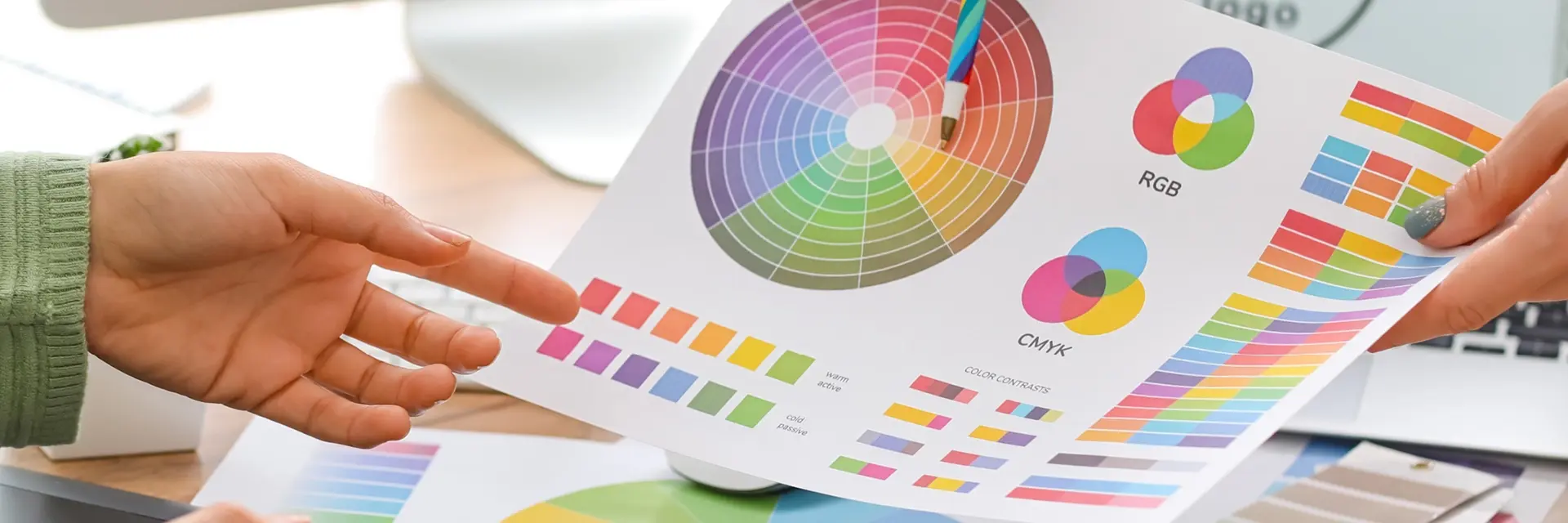
Color is a powerful tool in branding. It evokes emotions, influences behavior, and shapes how a brand is perceived. By applying color psychology, you can create a strong brand identity that resonates with your target audience and differentiates your brand from the competition. In this article, we dive into the world of color psychology and how to apply it to your branding.
The impact of color psychology on branding
Colors have a direct influence on how people experience and respond to a brand. A well-chosen color palette can enhance brand perception and influence customer behavior. Warm colors like red and orange evoke energy and urgency, while cool colors like blue and green convey trust and calmness. By consciously selecting colors that align with your brand values and message, you can strengthen the emotional connection with your audience.
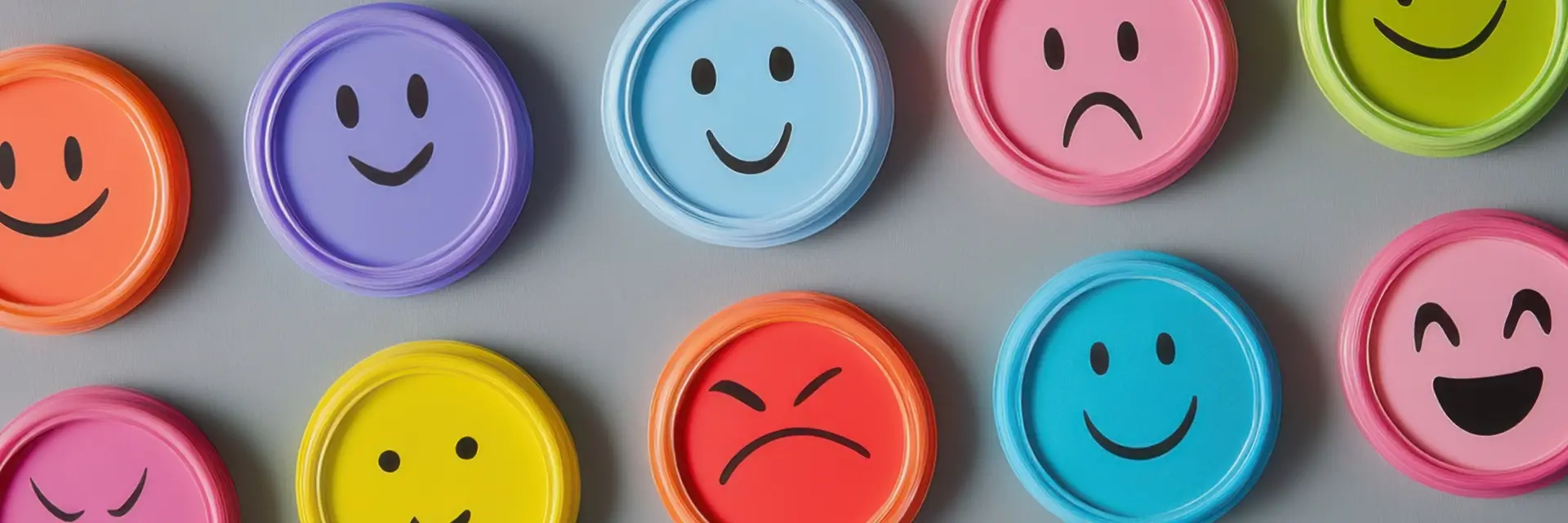
The meaning of different colors in branding
Each color has its own meaning and triggers specific associations, depending on culture and context. This is widely used in marketing, design, and art. Here are some common colors and their influence:
- Red: Energy, passion, excitement (e.g., Coca-Cola, YouTube)
- Blue: Trust, professionalism, calmness (e.g., Facebook, LinkedIn)
- Yellow: Joy, optimism, youthfulness (e.g., McDonald's, Yellowbrick)
- Green: Nature, health, sustainability (e.g., Starbucks, Holland & Barrett)
- Orange: Creativity, enthusiasm, friendliness (e.g., Nickelodeon, Coolblue)
- Black: Luxury, elegance, power (e.g., Chanel, Nike)
- Purple: Mystery, spirituality, creativity (e.g., Milka, Hallmark)
By choosing the right colors, you can strengthen your brand identity and evoke an emotional response from your target audience.
How to choose the right colors for your brand identity
Selecting the right colors for your brand identity is crucial for conveying the right message and creating a strong brand presence. If you want to apply color psychology, it's important to first understand the values and emotions your brand wants to communicate. Follow these steps to choose colors that not only enhance your brand identity but also appeal to your target audience:
- Your Brand Personality: Consider what your brand wants to express. Do you want to convey trust, playfulness, luxury, or perhaps energy and creativity? The colors you choose should reflect these characteristics and be consistent with your brand values.
- Your Target Audience: Know your customers and their preferences. Which colors resonate with them? Colors can trigger different emotions and associations, so it’s important to choose colors that align with the expectations and preferences of your customers.
- Your Industry: What are the common colors in your industry? Look at the colors used by competitors, but also consider how you can stand out. A unique color scheme can help your brand get noticed in a crowded market.
- Contrast and Readability: Ensure your color palette works well for readability and accessibility. Contrasting colors can improve readability, while too many similar colors can be visually confusing. A well-chosen color palette makes your brand not only attractive but also easy to recognize and understand.
By following these steps, you can develop a color scheme that is not only visually appealing but also effectively supports your brand identity and clearly communicates your message.
Color psychology and conversion optimization
Beyond branding, color plays a crucial role in conversion optimization. The colors you choose can significantly impact visitor behavior on your website, influencing whether they click a button, make a purchase, or fill out a form. Colors can grab attention, create urgency, or instill a sense of trust—all factors that are essential to the success of your website or landing page. By carefully selecting the right colors, you can increase conversion rates and enhance the user experience. Some examples:
- Red and orange are often used for call-to-action buttons because they exude energy, power, and urgency, encouraging visitors to take action.
- Blue and green evoke trust and stability, making them popular choices for financial institutions, healthcare providers, and brands that want to convey reliability.
- Yellow and orange immediately attract attention and can spark curiosity and enthusiasm, making them perfect for highlighting promotions or special offers.
By testing different color combinations and measuring their impact on conversion rates, you can further optimize your branding and better cater to your audience’s needs and behaviors.
Examples of strong brands and their use of color
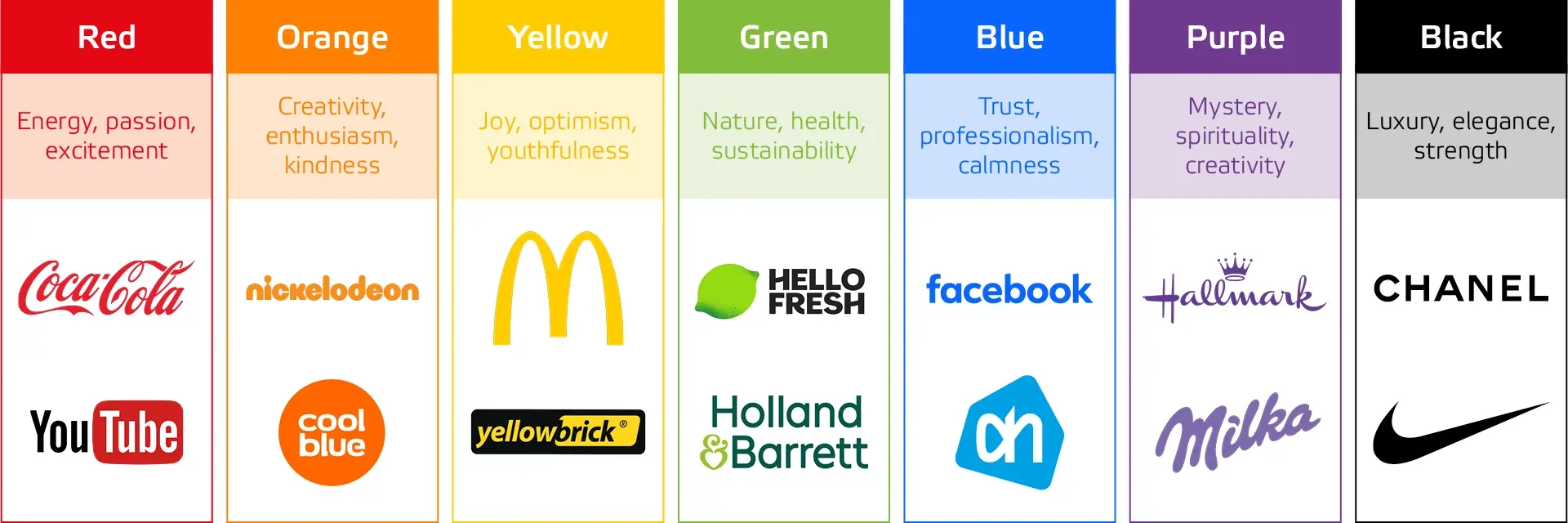
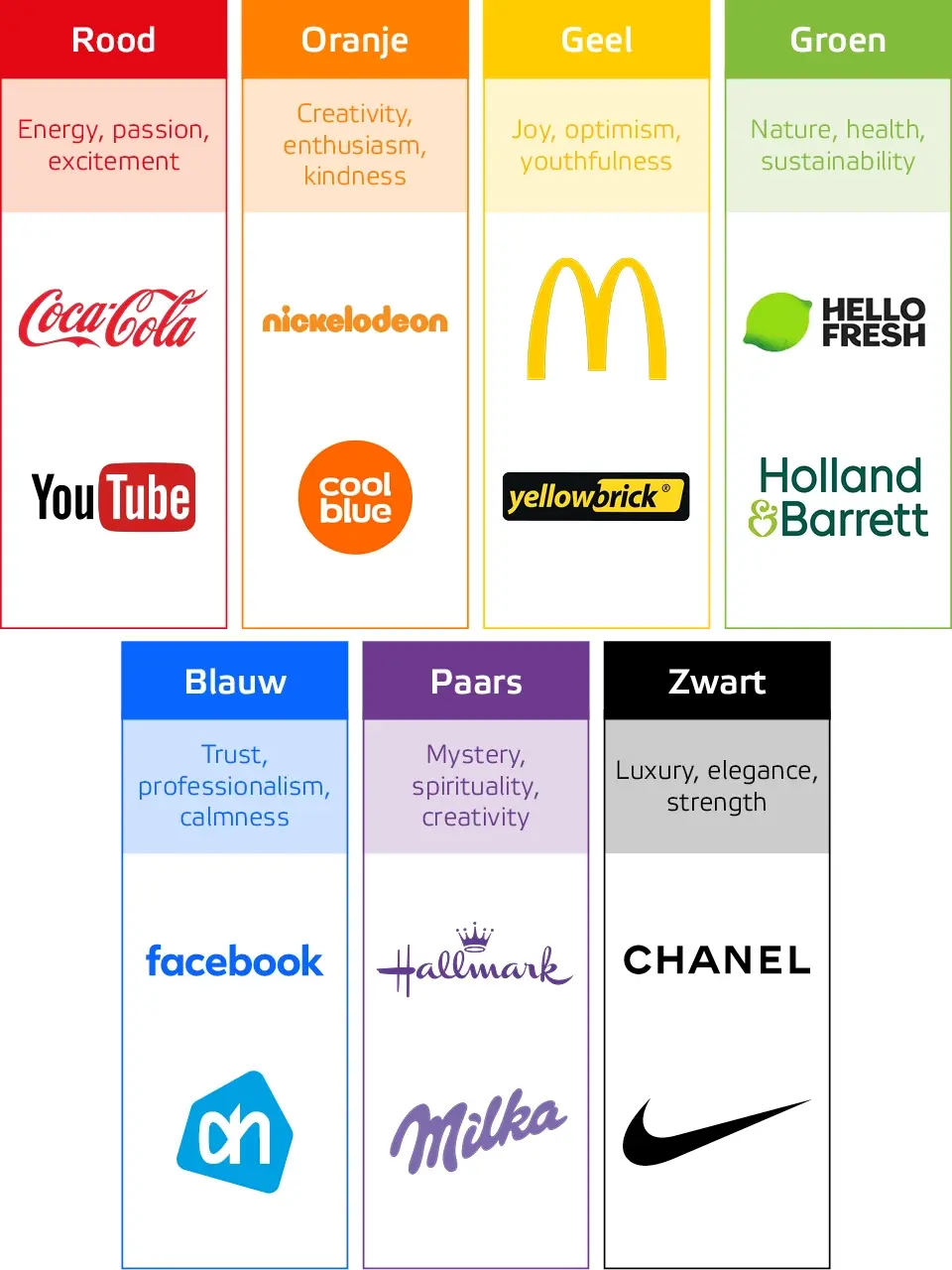

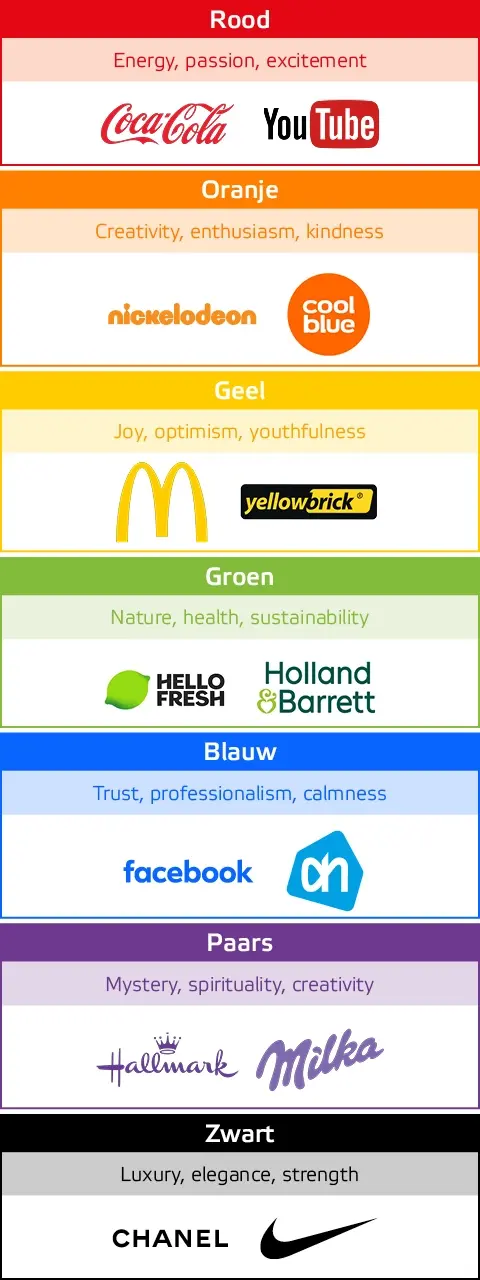
Some well-known brands that successfully apply color psychology:
- Coca-Cola: Red symbolizes passion and energy, perfectly matching their vibrant image.
- Facebook: Blue conveys trust and professionalism, essential for a social media platform.
- McDonald's: Yellow and red stimulate appetite and evoke a sense of happiness and speed.
- Starbucks: Green represents nature and sustainability, aligning with their focus on fair trade and eco-friendliness.
By learning from these brands, you can gain inspiration for your own branding.
Tools for choosing color palettes
Fortunately, there are several useful tools to help you create an effective color palette:
- Adobe Color: A powerful tool for generating and testing color palettes.
- Coolors: A simple tool for creating and adjusting color schemes.
- Canva Color Palette Generator: Upload an image to automatically generate a color palette.
- Paletton: Helps you find harmonious color combinations.
By using these tools, you can easily develop a brand identity that is both visually appealing and strategically effective.
Conclusion
Color psychology plays a crucial role in branding and marketing. By selecting and utilizing the right colors, you can shape the perception of your brand, increase conversions, and build an emotional connection with your target audience. Use the insights and tools from this article to create a strong, recognizable, and effective color palette for your brand.

Want to learn more?
Contact Rob!
Do you not check our website daily for the latest tips? No problem! You can also follow us on our social media channels. We regularly share updates, useful facts and a behind-the-scenes.